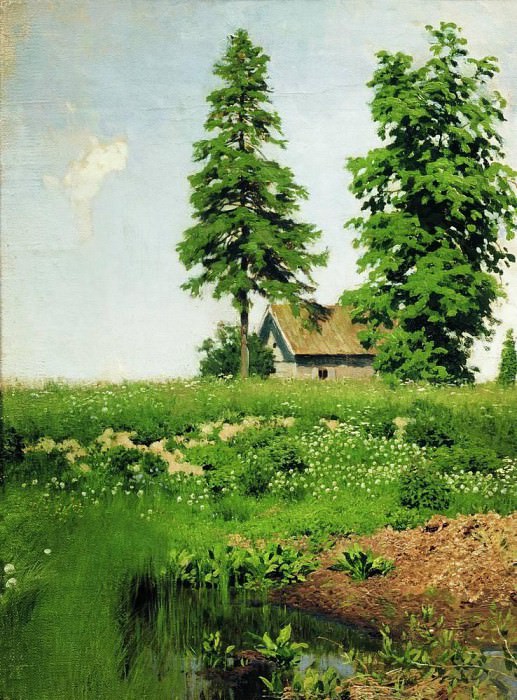hut on a meadow. 1880 Isaac Ilyich Levitan (1860-1900)
Isaac Ilyich Levitan – hut on a meadow. 1880
Edit attribution
Download full size: 738×1000 px (0,1 Mb)
Painter: Isaac Ilyich Levitan
Levitan has been called the "painter of mood" and the "singer of Russian nature," and it is enough to look at his paintings to feel with all your heart why this is so. All his landscapes are permeated by his mood - you can find cheerful and sad, joyful and wistful, permeated with fear and expectation, and, on the contrary, radiating hope and light. To the first glance at them, it seems that it is impossible to so accurately convey the pain and happiness of the human soul through the image of nature - always Russian nature - but once you look, it is impossible to forget. " A hut in the meadow" is no exception.
Description of Isaac Levitan’s painting "A Hut in the Meadow
Levitan has been called the "painter of mood" and the "singer of Russian nature," and it is enough to look at his paintings to feel with all your heart why this is so. All his landscapes are permeated by his mood - you can find cheerful and sad, joyful and wistful, permeated with fear and expectation, and, on the contrary, radiating hope and light.
To the first glance at them, it seems that it is impossible to so accurately convey the pain and happiness of the human soul through the image of nature - always Russian nature - but once you look, it is impossible to forget.
"
A hut in the meadow" is no exception. It’s a landscape-mood, which responds with a presentiment of good. There is seemingly nothing special in it - a stumpy hut between two tall trees, a scattering of fluffy unflowered dandelions in a green meadow, a tiny pond overgrown with tall grass and only a tiny edge reflecting the sky...
But all this is painted with such warm, so precise colors that it lifts your spirits and seems that everything will turn out for the best. The painting’s summer afternoon - a tiny cloud floating across the sky, painted very precisely and gently, in Levitan’s usual reverent manner - makes one believe that in reality summer will come, too, in which everything will be fine.
In addition, like any good painting, the landscape awakens your imagination - it is easy to imagine a young girl, almost a girl, in a simple homespun dress, comes out of the hut and goes to pick dandelions, blowing their soft white feather, making wishes and laughing. Or two children will run out, start running among the flowers, make a whole dandelion storm, and then fall asleep in the soft grass.
"The hut in the meadow" encourages such thoughts and fantasies, provokes them. And this is nice, because without the picture one does not always have the time and desire to think about laughing children himself
Кому понравилось
Пожалуйста, подождите
На эту операцию может потребоваться несколько секунд.
Информация появится в новом окне,
если открытие новых окон не запрещено в настройках вашего браузера.
You need to login
Для работы с коллекциями – пожалуйста, войдите в аккаунт (open in new window).




















You cannot comment Why?
Two prominent trees stand sentinel beside the hut, their full, leafy canopies reaching towards a pale, expansive sky. The meadow is a tapestry of vivid greens, speckled with countless small white wildflowers, evoking a sense of natural abundance and untamed beauty. A small, dark stream or pond meanders through the foreground, its surface reflecting the surrounding foliage and the sky, adding depth and a sense of coolness to the scene.
The painting conveys a sense of pastoral tranquility and perhaps a touch of idyllic simplicity. The bright daylight, the abundance of life in the meadow, and the solitary dwelling speak to a quiet, self-sufficient existence, harmonious with the natural world. Theres a feeling of permanence and rootedness in the landscape, hinting at a life unburdened by the complexities of modern society. The subtext could explore themes of rural life, simplicity, connection to nature, and the quiet beauty found in ordinary scenes. It might also evoke a sense of nostalgia for a perceived simpler past.